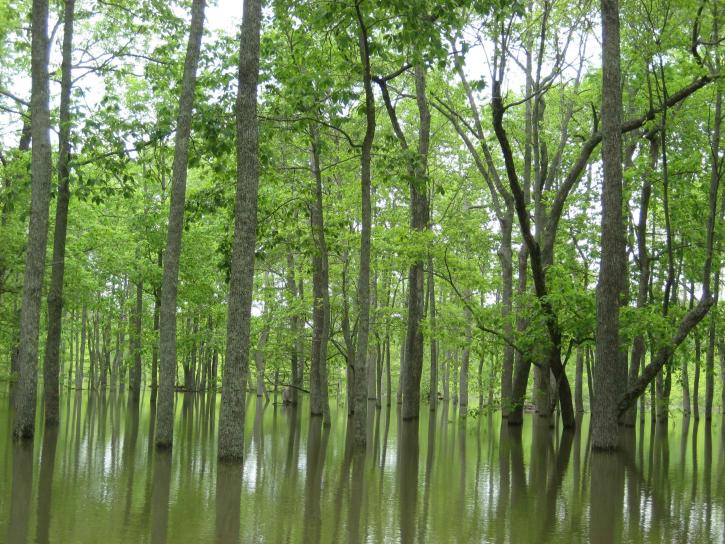Introduction
During spring and summer, trees can be impacted by a number of heat related disorders. The following examines the effects of those wrought by severe storms, including flooding, water stress, lightning strikes, and hail.
Flooding and Water Stress
Excess water can have an adverse effect on certain tree species. Short term flooding is generally innocuous, but persistent flooding, and standing water brought on by poor drainage can smother root systems, sapping them of oxygen. The lack of oxygen causes roots to undergo a process called anaerobic respiration, which can result in the buildup of toxic compounds in the tree.
Trees vary widely in their tolerance for flooding. Upland species, such as hickory and white oak, are more vulnerable to water stress than bottomland species like red maple or sweetgum. Most conifers are relatively intolerant of flooding, with the exception of white spruce and arbovitae.
Symptoms
Susceptible trees may exhibit symptoms similar to those brought on by drought stress. In hardwoods and conifers, wilting is a common symptom of water stress. Leaves and conifer leaders droop and curl, assuming a distorted appearance. Hardwoods may shed their leaves early, while conifers drop their interior needles. Premature fall coloration can also be indicative of water stress.
Prevention & Management
- When planting, consider trees with a relative tolerance to flooding. Green and white ash are among the most flood tolerant trees. Other trees that exhibit tolerance for flooding include boxelder, red maple, hackberry, sweetgum, sycamore, shingle oak, and pin oak.
- Avoid planting trees on slopes, or inclines where water is likely to collect.
- Routine mulching, and pruning will help to maintain tree vigor. During prolonged flooding events, healthy trees are more likely to endure than stressed trees.
Lightning Strikes
Summer storms are often accompanied by heavy winds, lightning, and hail. When lightning strikes a tree, it can fracture and splinter the wood. As lightning passes through the tree and into the ground, it may carve a groove in the conductive tissue and bark. This can cause extensive structural degradation, a result of the heat generated by the electrical charge. Sometimes, lightning may cause an explosive reaction, obliterating the tree altogether.
The extent of the injury depends on the intensity of the lightning, its point of entry, the moisture level of the tissue, and the characteristics of the wood. Certain tree species, such as oaks, pines, maples, and poplars, are more susceptible to lightning damage.
Symptoms
When a tree is struck by lightning, the most visible symptoms are the splitting of bark, and shallow radial cracking of the wood directly below the lightning path. Permanent leaf wilting may also occur on specific branches, or in sections of the tree’s crown. Trees may attempt to compensate for lightning damage by producing new growth. If the tree’s structural integrity has been compromised, any new growth may wilt, eventually resulting in twig dieback.
Prevention & Management
- Sufficient mulching, watering, pruning, and fertilization help maintain tree vigor. Healthy trees are able to compartmentalize wounds more effectively.
- Installing a lightning protection system can minimize the risk of damage from a lightning strike. Lightning protection systems are ideal for trees that stand alone in an open landscape or grow at a higher elevation. They are also recommended for trees of historic or financial value, as well as trees that are rooted within ten feet of a structure or building.
Hail Damage
While lightning can obliterate trees, hail shreds and tears exposed leaves, stems, and branches. Large hail can even damage or bruise bark. Damage from hail is usually slight, and easily remedied.
Prevention & Management
- Employ proper pruning methods to remove any broken stems or branches.
- Consider fertilization to help stimulate and repair damaged growth.
- Chemical or biological control practices can be utilized to manage insect infestations.


